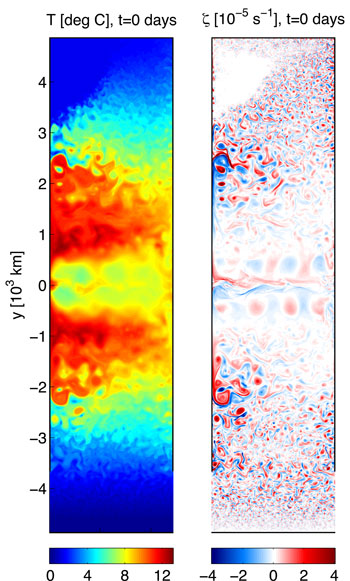The Adiabatic Pole-To-Pole Overturning Circulation
and the Formation of Deep Stratification
By:
Christopher Wolfe
Scripps Institution of Oceanography
| When: | Friday, March 4, 2011, 10:30 a.m. to 11:30 a.m. Join us for coffee beginning at 10:00 a.m. |
| Where: | Seminar Conference Room, 10100 Burnet Road, Bldg 196-ROC, Austin, Texas 78758 |
| Host: | Charles Jackson, UTIG |

Abstract
The adiabatic pole-to-pole cell of the oceanic meridional overturning circulation (MOC) and the formation of deep stratification is studied using three different idealized models of increasing complexity: a simple, analytically-tractable conceptual model, a coarse-resolution numerical model with parametrized eddies, and an eddy-resolving general circulation model. Two elements are found to be necessary for the existence of an adiabatic pole-to-pole cell: (1) a thermally-indirect, wind-driven overturning circulation in a zonally-reentrant channel (analogous to the Deacon cell in the Antarctic Circumpolar Current), and (2) a set of outcropping isopycnals shared between the channel and the Northern Hemisphere.
Only the first condition appears to be necessary for the formation of strong deep stratification. Contrary to classical theories, these results suggest that the deep stratification and the MOC in the present-day ocean are primarily controlled by wind and buoyancy forcing in the Southern Ocean rather than diapycnal mixing in the ocean interior.




